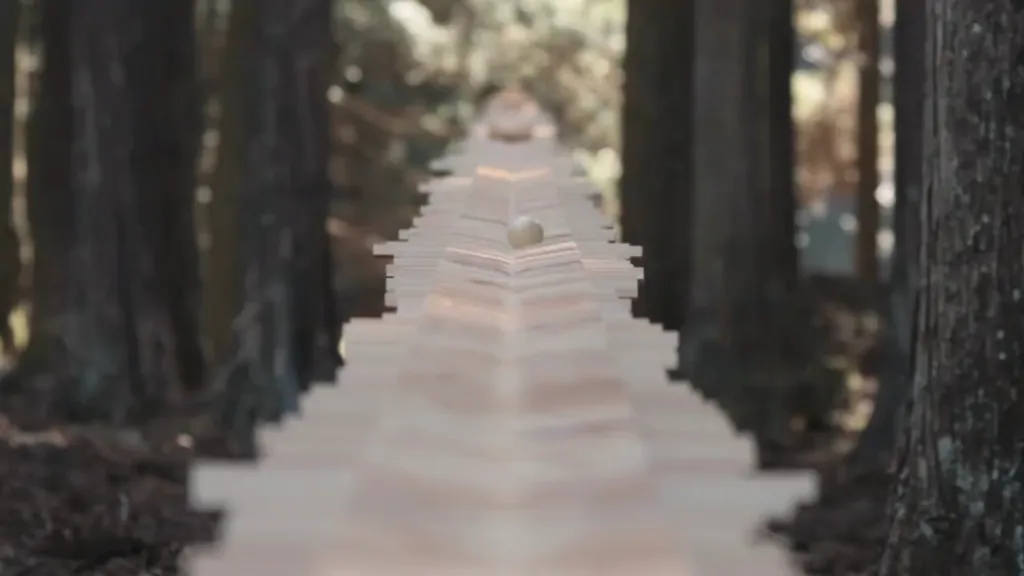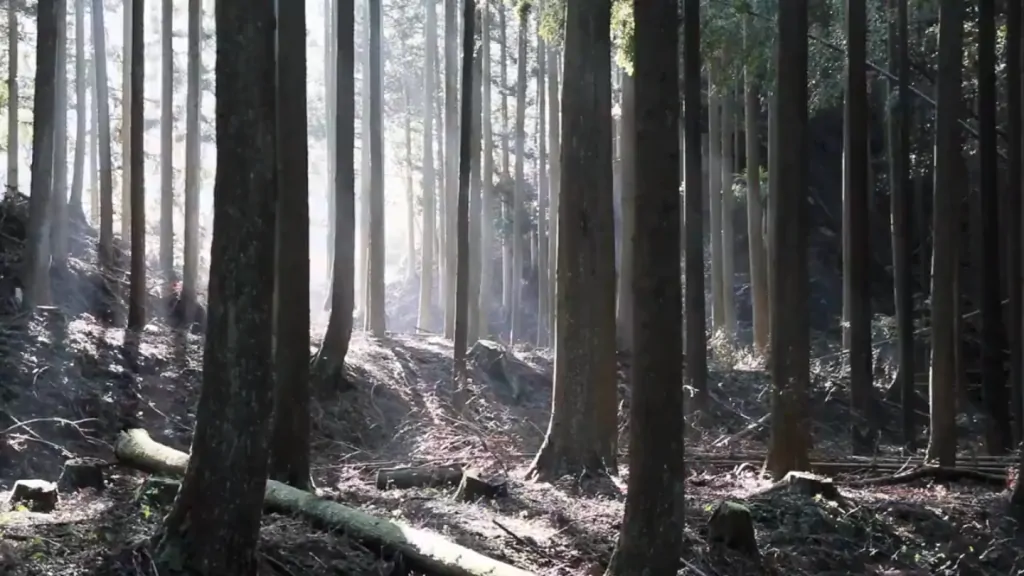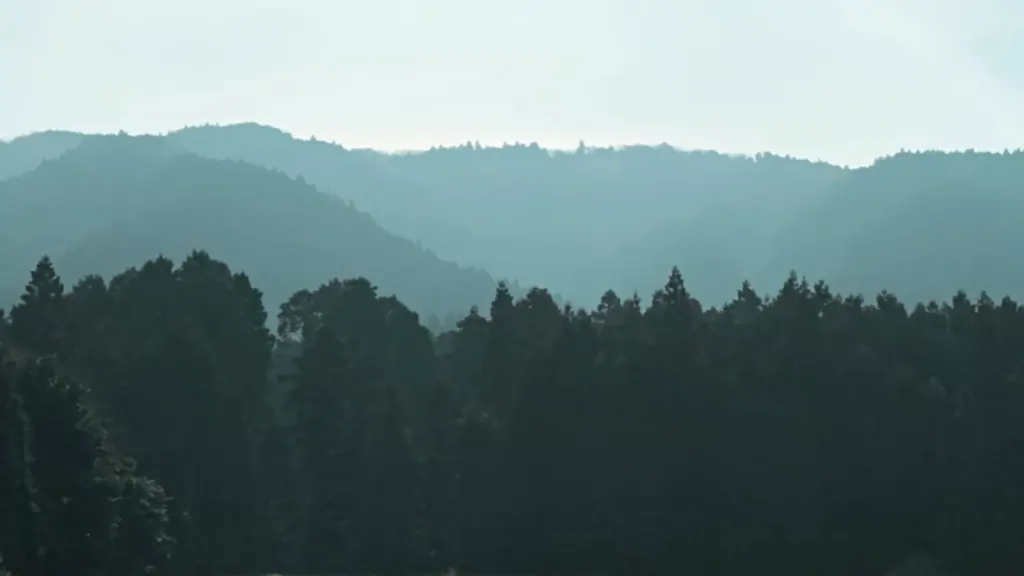A beautiful musical installation by creative director Morihiro Harano and his team, originally created for Japanese telecom NTT DoCoMo’s Touch Wood SH-08C phone.
Morihiro Harano, creative director on the project (now at NY/Tokyo agency Party) takes us through the steps that made the spot a success.
1. I decided to make a rectilinear xylophone.
It did not take much time for me to come up with the idea to set up a huge xylophone in the forest and play the instrument, but the first design submitted was much more complicated and twisted with gimmicks like the Rube Goldberg Machine. What I have done was to reduce such gimmicks and gave the visual direction: “straight line in the forest.” This process added a unique mystique and narrative aspect to the work.

2. We used 100% raw materials recorded on the spot.
No CG used. The finish of the xylophone itself became an art work, so we only put an effort into making the scene—the xylophone playing the music—as real as possible.

3. We chose Bach.
At first, we were imagining more complicated and faster paced music, like Turkischer Marsch. However, due to the structure of the xylophone, we noticed that it was better to choose music that had the same length of notes, and so we decided to choose Bach’s Cantata. We worried a little that the choice might be a little too literal, but looking back, it was a necessary choice to achieve the viewer’s empathy for the wooden sphere.

4. We worked with Japanese craftsmen who made the finish perfect.
The xylophone was made by (Carpenter/Wood Engineer) Mitsuo Tsuda, the sound designer, Kenjiro Matsuo and the carpenters on site. If even once the installation went wrong, the tempo of the music became unstable. It was very hard project to realize, but the skill of Japanese craftsmen are just impressive. Not only they made it more accurate than the blueprints but also created a visually beautiful xylophone.

5. The power without our control added different meaning to the work.
The day the film was released, was the day the earthquake hit in Japan. The client had no choice but to cancel the whole campaign. Only this movie uploaded on the website started to walk around Facebook pages and eventually caught the eyes of the blog editor at New York Times Magazine. The article lead the work to the massive success, but I am sure, behind the world’s attention, there is a special feeling towards Japan, the country facing a historical disaster.


